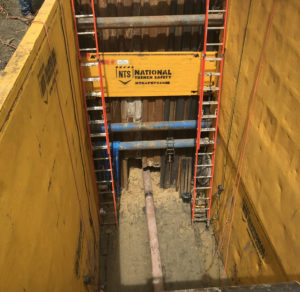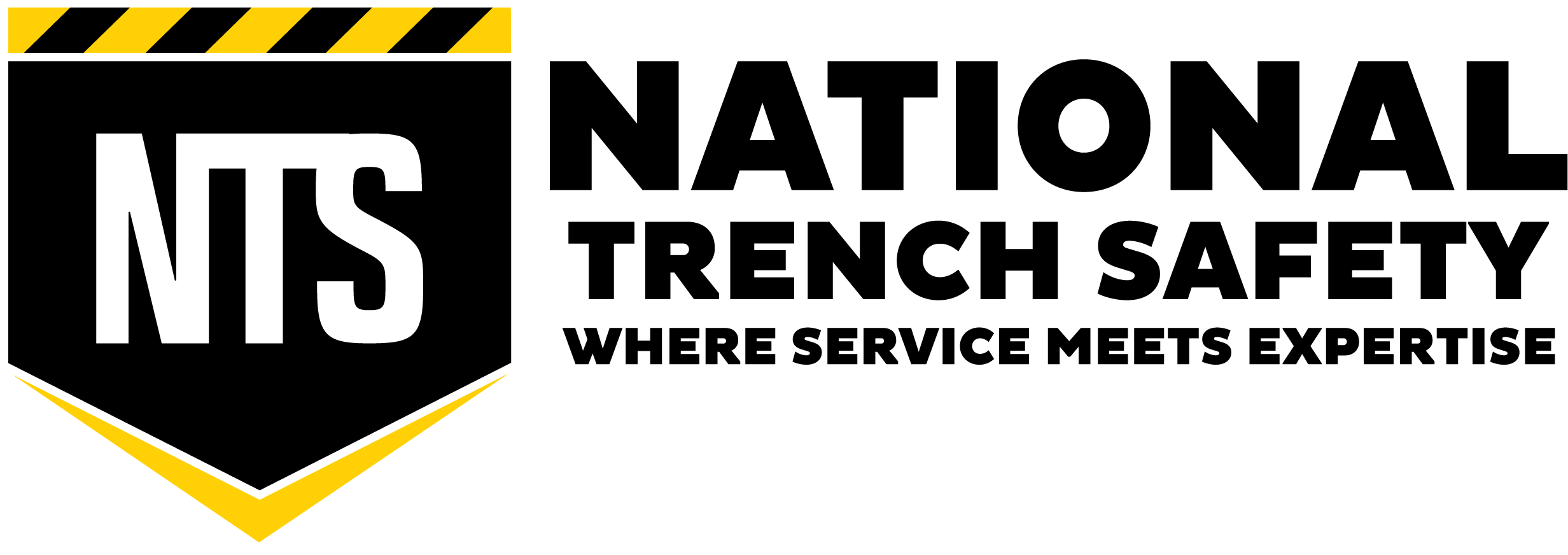Trench Shields Combined with Sheeting Guide Frame Impresses Contractor
To accommodate a fast-growing suburb in North Texas a contractor was recently tasked with installing a new 8-inch gas main that would tie into an existing 24-inch gas main line. The contractor estimated that the required bore pit would roughly measure 24-ft long, 10-ft wide, and 18-ft deep in sandy clay soil. The contractor after studying the site had a few concerns about selecting the right protective system. First, they noticed the limited operational space available to place the bore. Second, the presence of multiple surface encumbrances that would require extra precaution. Encumbrances can be anything that is in the area that needs to either be supported or protected. Lastly, the contractor wanted a system that could quickly be installed but also ensure the integrity of the site.
To find a system that would address these concerns the contractor reached out to the local NTS branch. After reviewing a few options, the contractor selected a system composed of two 10-ft tall and 24-ft long trench shields with 10-ft long spreader pipes. Additionally, a 12-ft long sheeting guide frame was used on the bore side overlapping the trench shields walls while on the opposite end, two trench shields panels measuring 10-ft tall by 12-ft long were used to cap the backside of the bore pit. And as an extra  bonus, the additional height of the trench shields created a 2-ft to 3-ft barrier around the open pit. Trench shields come in a wide range of sizes, either standard or custom-built to meet various project requirements and the most demanding trench and excavation applications. Lightweight single-wall and heavy-duty, double-wall shields work well for the smallest and the largest contractor and municipality job needs. On the other hand, steel guide frames are designed to work around utility crossings while protecting the excavation. The inner channels of the steel guided frame allow steel sheeting to be inserted and pushed to various depths.
bonus, the additional height of the trench shields created a 2-ft to 3-ft barrier around the open pit. Trench shields come in a wide range of sizes, either standard or custom-built to meet various project requirements and the most demanding trench and excavation applications. Lightweight single-wall and heavy-duty, double-wall shields work well for the smallest and the largest contractor and municipality job needs. On the other hand, steel guide frames are designed to work around utility crossings while protecting the excavation. The inner channels of the steel guided frame allow steel sheeting to be inserted and pushed to various depths.
Once the protective system was safely installed, the contractor lowered the bore machine and installed the new 8-inch gas line under the four-lane road. After completing the installation, the new 8-inch line began to adequately supply natural gas to the fast-growing suburb. The contractor was ecstatic about how well the system performed and provided safety to the crew throughout the project.






